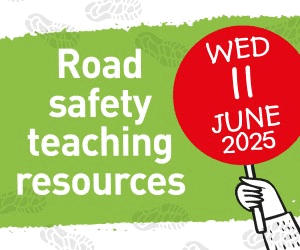Primary Times - the definitive what’s on and where to go family guide of activities and events for children of primary school age. Things to do with your kids during the school holidays including arts and craft activities, music and theatre for children, parties, competitions, days out, and family attractions along with term time drama schools, dance classes, after school clubs and sports activities. Things to do at a place near you!
History for children in Cornwall

This spring, indulge curious young minds with tales, re-enactments, artefacts and stories from days gone by.
Luckily, Cornwall boasts an abundance of historical properties, museums and attractions that will have a gravitational pull on any young history hunter.
Read on to find out more about what Cornwall has to offer…
Living History In Cornwall
Being fully immersed in an historical setting actively captures a child’s imagination in a way that is both engrossing and educational. Young visitors to the authentic re-created scenes at the Victorian Village and the Britain in the Blitz exhibits at Flambards (www.flambards.co.uk) can truly enjoy an enlightening time travellers experience.

Similarly, many National Trust properties across Cornwall host seasonal living history events where children can wear historical costumes and re-enact scenes from days gone by.Take a look at www.nationaltrust.org.
Families can sample living history at one of Henry VIII’s finest coastal fortresses at Pendennis Castle, in Falmouth, which offers activities such as cannon firing, jousting with knights on horseback, piratical adventures and musket drills (www.english-heritage.org.uk – Pendennis Castle).
British History
From the Stone Age to the Iron Age, from the Anglo Saxons to the Vikings, to the impact that the Roman Empire had on Britain, children are already taught the fundamentals of British History at primary school. To re-enforce this understanding of British history, parents can direct their children to view the website www.show.me.uk which is packed with games, collections, videos, stories and homework help from museums and galleries.
Fossil Hunting and Archaeology
Cornwall is not really an area renowned for particularly good fossils, as the rocks are generally not  fossiliferous. Yet, the coastline between Bude and Boscastle is one exception which is a well-known site rich in yielding fish, plant remains and Goniatites which are identified by their distinctive round, coiled shell.
fossiliferous. Yet, the coastline between Bude and Boscastle is one exception which is a well-known site rich in yielding fish, plant remains and Goniatites which are identified by their distinctive round, coiled shell.
Notably, Pendower Beach in the south also offers the chance to find Trilobites – a fossil group of extinct marine arthropods. Discover more at www.ukfossils.co.uk/cornwall and don’t forget to follow the appropriate safety guidelines when fossil hunting.
The Young Archaeologists’ Club (YAC) is suitable for youngsters who are interested in archaeology. Across the UK there is a network of local clubs where 8–16 year olds can indulge in a spot of real archaeology. Find a Young Archaeologists Club at www.yac-uk.org
Local history
Everywhere you go in Cornwall, there’s physical evidence of a region shaped by mining. Roads, railways, towns and harbours were all developed to support and expand this crucial industry. Uncover where it all began at www.cornish-mining.org.uk.
History enthusiasts will really to need to pay a visit to the Royal Cornwall Museum in Truro (www.royalcornwallmuseum.org.uk) which houses permanent displays on Cornwall’s rich history and a diverse range of temporary exhibits which includes fine art and world cultures.

Cornwall’s Communication History
Families may be surprised by Cornwall’s hidden history at the Telegraph Museum at Porthcurno (www.telegraphmuseum.org) which recognises the area’s importance in global communications since 1870, and especially during World War II.
Whilst, the Goonhilly Earth Station, located on the Lizard Peninsula is renowned for receiving the first ever trans-Atlantic TV images in 1962. Although the visitor centre is currently closed, there are educational outreach services on offer in STEM (Science, Technology, Engineering and Mathematics) subjects – take a look at www.goonhilly.org
Read more: Horrible Histories
History is never boring! In support of this statement and to demonstrate its sizable interest, the  Horrible Histories compendium has flourished as the fascinating tales of wonderment and woe seemingly appeal to a child’s natural curiosity.
Horrible Histories compendium has flourished as the fascinating tales of wonderment and woe seemingly appeal to a child’s natural curiosity.
Children simply adore soaking up the dangerous and disgusting stories, about the foul food, the terrible toilets, the bloody battles and the fearsome fighters. It’s a great way to engage a child’s intellect in history. Read more at www.horrible-histories.co.uk
Museums at Night: Wednesday 11 to Saturday 14 May
Over four days in May, an array of museums, galleries and historic spaces all over Cornwall will be hosting fantastic night-time events for the springtime Museums at Night festival.
During this UK wide annual after-hours festival of arts, culture and heritage, thousands of delighted visitors will enjoy the chance to experience culture and heritage in a totally unexpected way. Visit www.museumsatnight.org.uk
Visit world class Museums in London
The fervent history hunter will relish a day trip to the capital as there is so much on offer to appease a curious mind.
The British Museum, the Victoria and Albert Museum of Childhood, the Natural History Museum, the Science Museum, the Bank of England Museum and Imperial War Museum, to name a few, are furnished with historical treasures and artefacts that are sure to engage a young history enthusiast’s attention.
Plus, the great news is that entry to these museums continues to be free of charge. Visit www.visitlondon.com
Discover more about the seeds of communication in Porthcurno
Imagine a life without computers or mobile phones. How did people get in touch?
Visit a pre-digital world and discover how global communication began at the Telegraph Museum in Porthcurno. From the first beat of Morse code to the satellite signals that beam overhead, the seeds of modern communication were sewn in Porthcurno.

It all started with a single underwater cable in 1870. Suddenly, it became possible to send messages from Porthcurno to Bombay in India within a minute and as a result a world of possibilities opened as Cornish shores connected with the British Empire.
One hundred years passed and Porthcurno’s undersea network multiplied with an intricate web of 14 cables which linked the Cornish village to every corner of the world.
In 1970, the telegraph station closed and transformed into a world-renowned technical training college, which also closed in 1993. Fast forward to 1998 and with funding from the Heritage Lottery Fund and Cable and Wireless, a visitor friendly Museum was created on the site. It was time to re-share the hidden heritage at Porthcurno with the world! To discover more about this fascinating venue that is set amid a truly stunning setting visit www.telegraphmuseum.org




